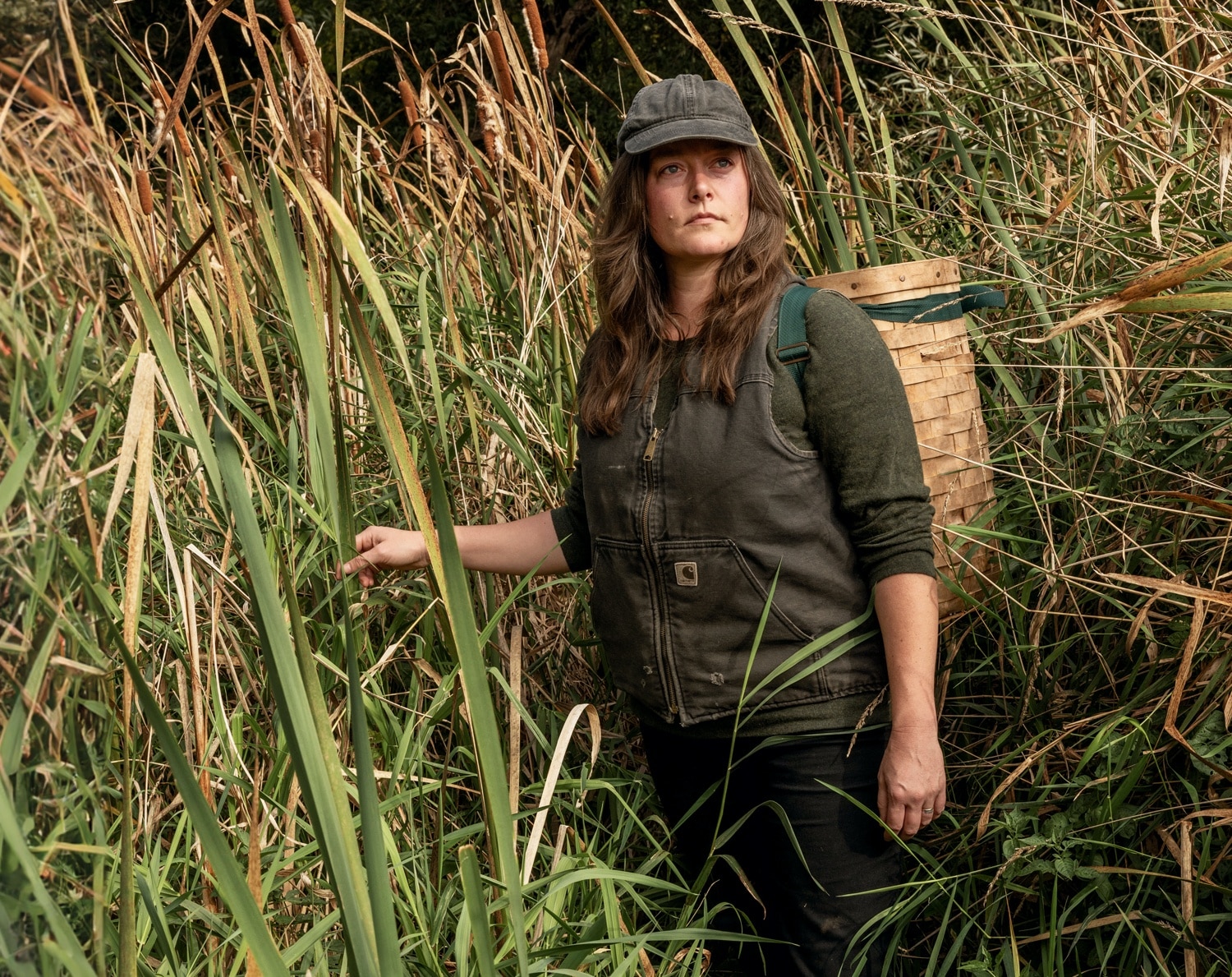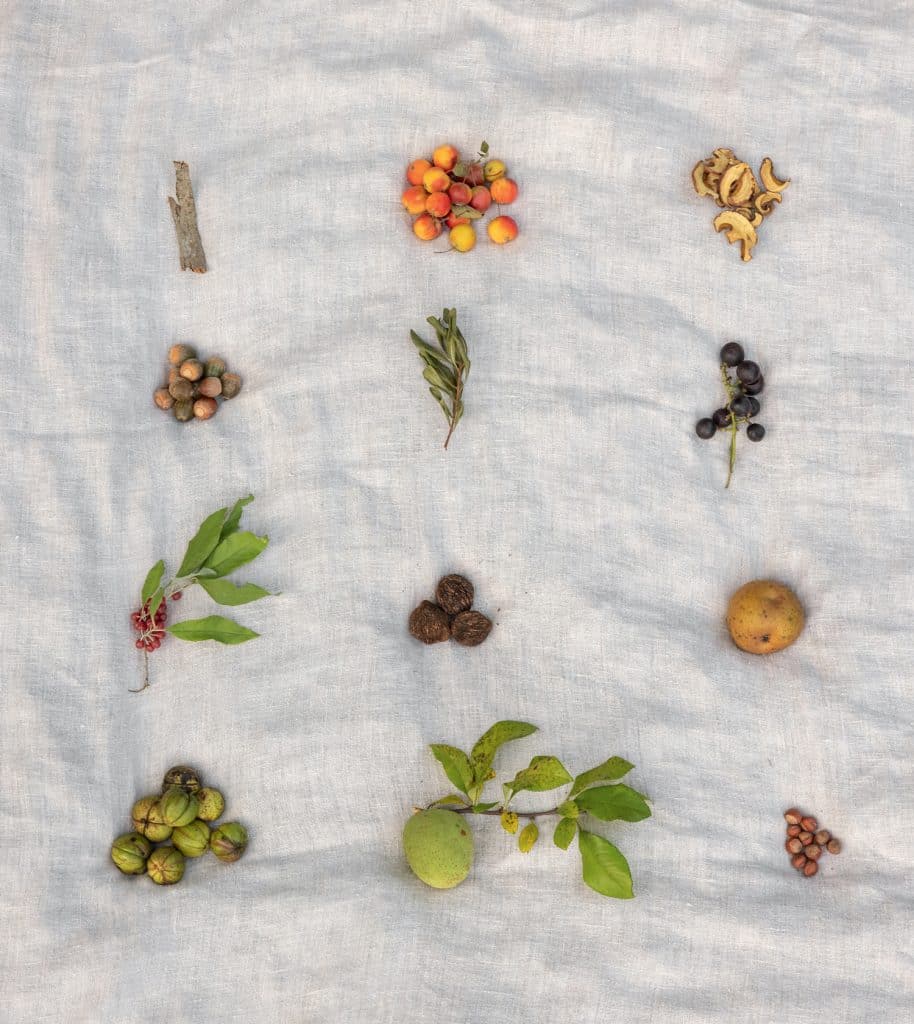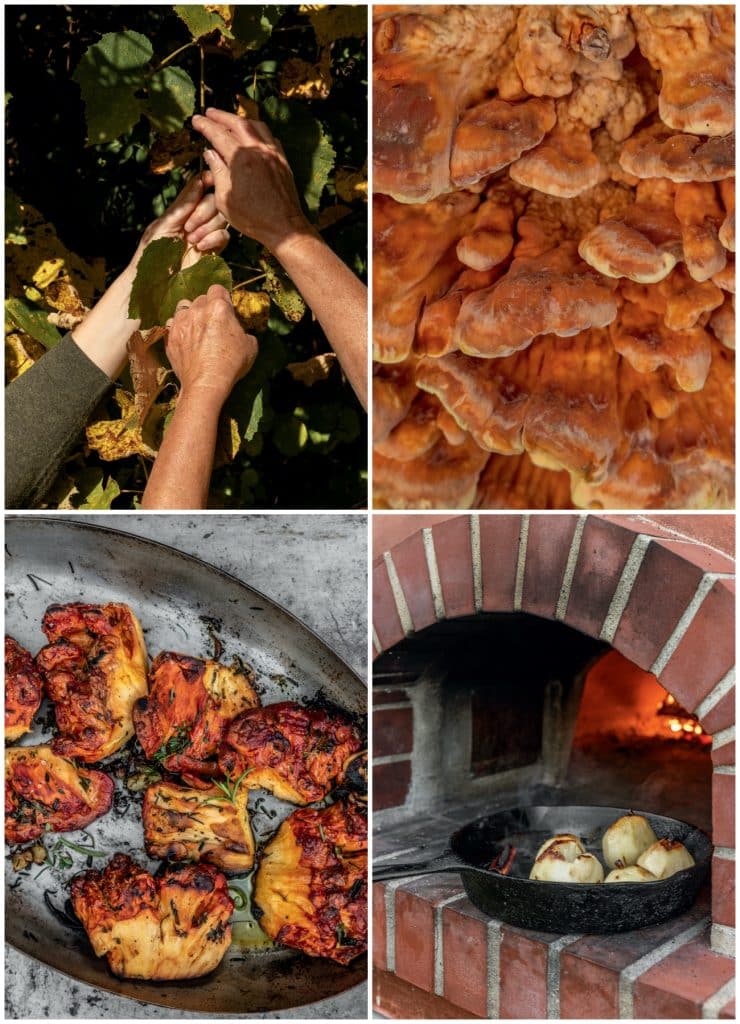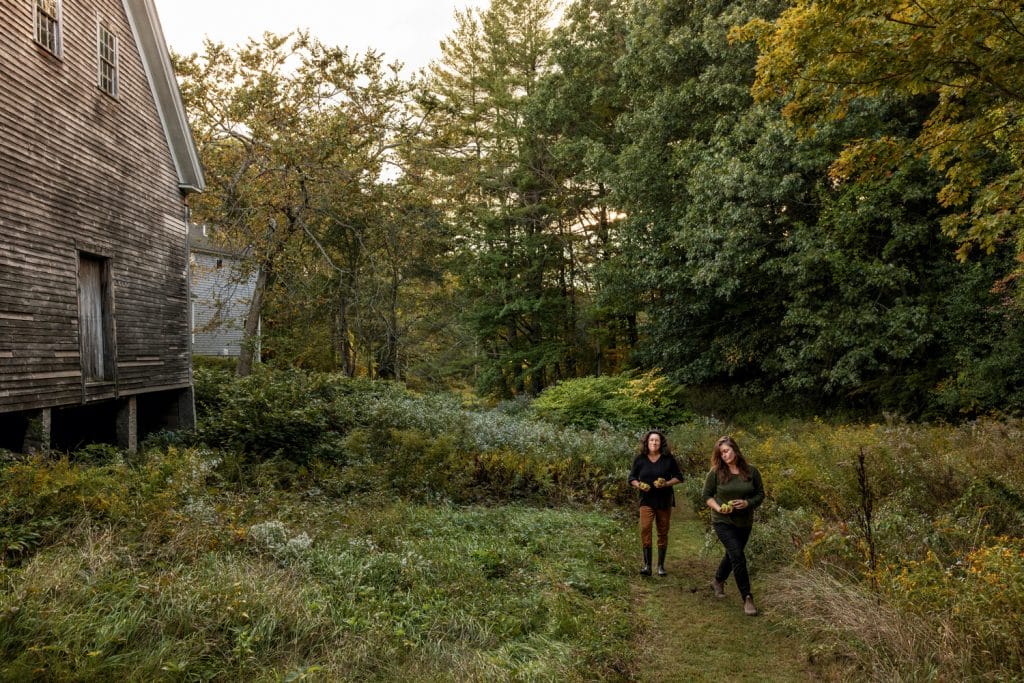From Forest to Table with Forager Jenna Rozelle
When a food writer joins a forager for a walk in the Maine woods, it opens up a world of delicious possibilities.

Coffee By Design | Portland, Maine
Photo Credit : Katherine KeenanBy Kathy Gunst
Jenna Rozelle walks quietly in a field, along the edge of the woods. Leaves crunch underfoot as she peers up into the trees, and then down to examine the roots. She follows piles of acorns and takes note of dug-out patches of earth. “Deer were feeding here last night,” she tells me. “There must be something good around.”
It’s late September and we are hiking in the field across the street from my house in southern Maine. Rozelle has discovered clusters of wild Concord grapes, autumn olives, deep-maroon sumac bushes, wild hazelnuts, hickory nuts, black walnuts, shagbark hickory trees, and a wild pear tree. As we make our way down a trail into the woods, she lists off possibilities like a chef at a farmers’ market: Steep the sumac in cold water for a few days for sumac lemonade. The hickory bark can be peeled off and steeped in a sugar solution to make “unreal” hickory syrup. The grapes can be eaten or smashed into jelly, and the pears, while ugly, prove to be “juicy, sweet, and full of possibility.”
The woods are damp from recent rains. Rozelle leans her head down into a pile of leaves, sifts through them, and sniffs. She reminds me of a hound searching for truffles. We are moving along the path when suddenly she stops dead in her tracks. “Whoa!” she yells. When I look down I see a massive chicken of the woods mushroom, the size of a giant watermelon, clinging to a dilapidated oak tree. “Oh boy,” Rozelle says, laughing. “This is a good one.”
She pulls a sharp knife from the pack basket she carries on her back, carefully cuts the mushroom loose from the tree base, and hands it to me. If this were a perfume it would be called New England Woods, Late September. It’s earthy, rich. Wildly seductive.

Photo Credit : Greta Rybus
I have lived in an old farmhouse on this piece of land for close to 40 years. I have written 16 cookbooks in this house and developed thousands of recipes for radio shows and newspaper and magazine articles, and yet I have never discovered many of the wild foods that grow just outside my kitchen door. Walking around the property with Rozelle reminds me of that moment in The Wizard of Oz when everything goes from black and white to color. The outside world comes alive. It’s as if I’m seeing it all for the first time.
Rozelle, 38, calls herself “a wild food educator and writer.” Being outdoors, exploring the woods, is where she is most comfortable. Most at peace.
Growing up in South Berwick, Maine, she spent her childhood roaming through fields and the surrounding woods. “I had a group of imaginary friends I called ‘Thranka Bears,’” she tells me, laughing at the memory. “We hung out in the thicket under a shagbark hickory tree. My mother let me and my siblings wander by ourselves and taught us to be comfortable outdoors. I learned at a very early age to never be bored in the outdoors.”
Rozelle’s mother, Beth Power, is an herbalist. “She was always going into the yard and collecting wild herbs and plants to make medicine,” explains Rozelle. “That’s how health care was dealt with in our house. The plant and outdoor world were seamlessly integrated into our lives.”
One of her earliest memories is ofbeing injured while throwing a stick for their dog. “I didn’t know the dog was tied up and I was standing on the rope. It wrapped around my leg and I fell off the porch with really bad rope burns.” Her mother went into the yard, grabbed some common plantain leaves, chewed them, spit them out, and made a poultice. The relief, says Rozelle, “was instantaneous and very memorable.”
Although she watched her mother preparing tinctures for years, she was never formally trained as an herbalist. Rozelle watched, learned, absorbed. Self-education is a theme in her life. She dropped out of high school and “home-schooled myself” for a year and a half. “I wanted to learn, but it wasn’t working in school. I had a sense that there had to be a different way.” After graduating early in 2002, she moved to New York City and worked as an audio engineer. “New York,” she says, “was definitely not a place for me.” She returned to Maine, worked construction with her father, found jobs in restaurants, and eventually ran a small bookstore and coffee shop.

Photo Credit : Greta Rybus
It was in 2008, when she moved to Down East Maine and lived with her then-boyfriend on a few acres on the coast, that her path became clear.
“There was lots of room to roam up there,” she recalls. “I am always curious about where I am. A large part of learning about a place is food. And there is nothing more enjoyable than free food. The seashore is full of food.”
The couple had no electricity or cell phones, so Rozelle found herself spending hours reading, educating herself on wild foods. Her life as a forager began out of curiosity and necessity. Since the couple was financially stretched, “whatever we didn’t have to buy we foraged for,” she says. “We fished, hunted for shellfish, fruit, berries.” Rozelle tried being a vegetarian, but her body “didn’t feel good.” That’s when she began hunting small game: squirrel, rabbit, duck, grouse. “It was a moral, ethical necessity. We couldn’t afford to buy meat that was raised in a way I felt good about eating.”
Eventually she moved to southern Maine, where she met and married Shaughn Darcy, and worked as a forager selling mushrooms and plants to high-end restaurants across the country. These days she splits time between teaching wild foods classes, taking clients on walks around their property or at local farms, and writing about outdoor life. Her Substack blog, Appetites, is a combination of writings on wild foods, seasonal foraging, recipes, poetry, recorded spoken word, and photography. Writing has become an increasingly important part of Rozelle’s life, and one of her goals is communicating about the pleasures of the foraging world in a way that inspires people to spend more time outdoors.
“Foraging gets painted in an antiquated light,” she says. “It has an association with poverty and being old-fashioned. But really 99 percent of our time as humans on earth has been spent on these landscapes eating these plants. It wasn’t all that long ago that this was how we all lived. When we choose to engage with our landscape and the outside world, it’s the culmination of everything a human body and mind needs. There’s your body moving, your eyes looking at shapes and colors, texture and movement.”
A large part of the guided foraging walks Rozelle leads is to dispel fear and get people—people who generally spend their days indoors—to trust the outdoor world more.
“Fear comes from a good root,” Rozelle concedes. “If you look at a plant and don’t know what it is, don’t eat it. But I will teach you to know what it is. Think about the poisons we willingly eat all day. The chronic illness, the disease that mass-produced food is causing. Fear is almost a phobia of everything outside the garden fence.”

Photo Credit : Greta Rybus
On a hike around my woods last spring, Rozelle led me to a marsh full of young cattails. “These look delicious!” she said, her eyes lighting up. I laughed, thinking it was a joke. Cattails? She explained that in the spring, before their signature brown fuzzy heads form, you can pick off the spikes (technically the male flower), boil them in salted water, and eat them like corn on the cob. She held one up for me to examine. I swear they smelled like cucumbers. We harvested a dozen or so, headed back to my kitchen, and boiled up a pot of water. Minutes later, having slathered the “cobs” in salted butter, we were sucking on them like kids eating lollipops. They were sweet, wild-tasting, and vegetal.
“I always like to end my hikes with cooking,” Rozelle says, “preparing whatever we’ve found, just to prove the point that wild foods can be delicious and so full of nutrients.”
The giant chicken of the woods that Rozelle discovered in the woods offered many possibilities. “Should we roast it?” she asks. “Or make risotto? Or sauté it with garlic and herbs?” We decide to light a fire in my pizza oven, coarsely chop the mushrooms, toss them with herbs and garlic from the garden, and then finish with a glug of olive oil. Fifteen minutes later we devour the mushrooms and dunk some crusty bread into the pan juices so we don’t miss a morsel.
“Free wild food at its finest!” Rozelle says with a huge smile. “The outdoors,” she repeats, looking sated and happy, “are never boring!”
Kathy Gunst is a James Beard Award–winning food journalist and resident chef for NPR’s “Here and Now.” For more about Jenna Rozelle, go to jennarozelle.substack.com; to learn about Rozelle’s wild foods nursery, Thickery Pricket Farm, go to thickerypricketfarm.com.
For recipes inspired by Kathy Gunst and Jenna Rozelle’s foraging trip, go to newengland.com/wild_food.







